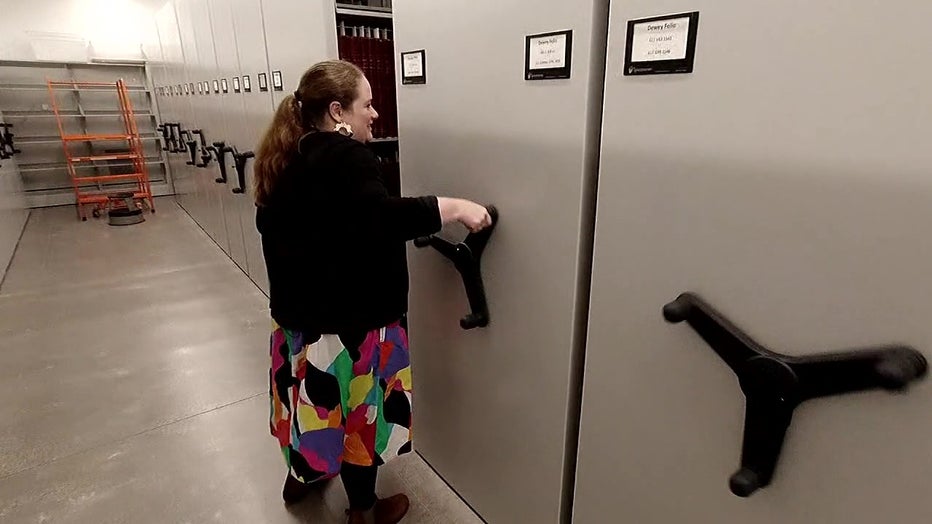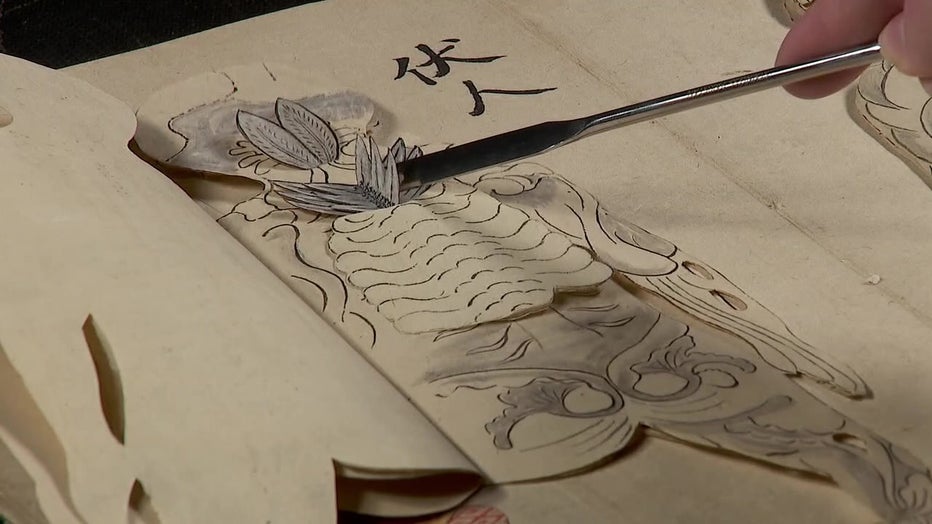Federal grant to digitize UMN flap book collection terminated

UMN loses grant to digitize historic books
Deep in the temperature-controlled vault at the Wangensteen Historical Library of Biology and Medicine, there are tens of thousands of centuries-old medical materials within the University of Minnesota?s collection. Scattered through the shelves are about 40 to 50 books that only a very select few are allowed to put their fingertips on. Associate curator Emily Beck is one of them.
MINNEAPOLIS (FOX 9) - Deep in the temperature-controlled vault at the Wangensteen Historical Library of Biology and Medicine, there are tens of thousands of centuries-old medical materials within the University of Minnesota’s collection. Scattered through the shelves are about 40 to 50 books that only a very select few are allowed to put their fingertips on. Associate curator Emily Beck is one of them.
"We can’t let people interact with them as much as you would hope to because the connection points are really fragile," Beck said.
What are the flap books?
The backstory:
Flap books dating back to the early 1500s, with incredibly delicate, almost lace-like tiny pages, used to be common practice in helping medical students, or anyone for that matter, better understand the human body.
"There’s not a ton of super-close detail on them. It’s giving you the idea of what the organs looked like," says Beck. "We don’t wear gloves because you are more likely to accidentally rip something because if you can’t feel something as well with our skin... you are more likely to accidentally rip something."
Therein lies the challenge: How to make these pieces of movable history more accessible for more people without risking destroying them?

(FOX 9)
Grant awarded
What we know:
In January, the University of Minnesota researchers were awarded a $99,782 grant over 1.5 years, beginning April 1, 2025, through Nov. 30, 2026. Digital Library Services Librarian Theresa Berger explains that the goal is to figure out a way to digitize books that are meant to move, while also meeting strict federal guidelines regarding lighting and capture standards for each image. It's something historical teams around the world have been trying to tackle but haven't figured out.
"I think that there have been people out there that have really tried to explore this sort of conundrum of like the non-traditional book, the nontraditional object, and there's always been kind of different projects here and there, but what's been really great about our project is we found out that there were people across the country, so we had letters of support from faculty at Cornell, at Northwestern really who were saying, ‘Hey go for this project,’" says Berger. "Give them the money so that they can try to figure this out."

(FOX 9)
Grant terminated
Big picture view:
On April 1, 2025, the day the NEH grant was set to begin, researchers received an email stating the grant was terminated.
"We're not totally sure what we do now. We're hoping that we'll be able to have some conversations with folks at NEH and maybe do an appeal to ask for the money back. We think we can make a good argument for it being really useful for the people of Minnesota, for the people of the United States, but we just don't know at this point," says Beck. "We’re hoping that the software that we were going to develop would be something that cultural heritage institutions like ours could use like anywhere."
For Berger, the importance of contracting with a software developer and creating a new viewing platform was recently highlighted by the southern California wildfires where she used to live and work, and where other original historical artifacts have been lost forever. Some digital versions are all that remain and now serve as a renewed reminder of the importance of saving flap books for future generations.
"I want my user to be able to turn this as if they were experiencing it in person and really understand the attention of the flap and understand like how far can it go without me grooming it anything like that because that's all part of how this was constructed. And we really want people to experience this as much as possible as you can with a digital surrogate," says Berger.
Work continues
What's next:
To this day, some U of M medical students are cutting out and creating their own flap books as a part-history lesson, part-anatomy lesson, while Beck exercises a lesson in patience to get the grant back.
"Wait and see, keep thinking, keep talking to people, keep networking, keep having conversations. You know, the thinking doesn't stop, but the work kind of has to pause for a while."

